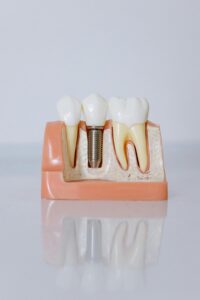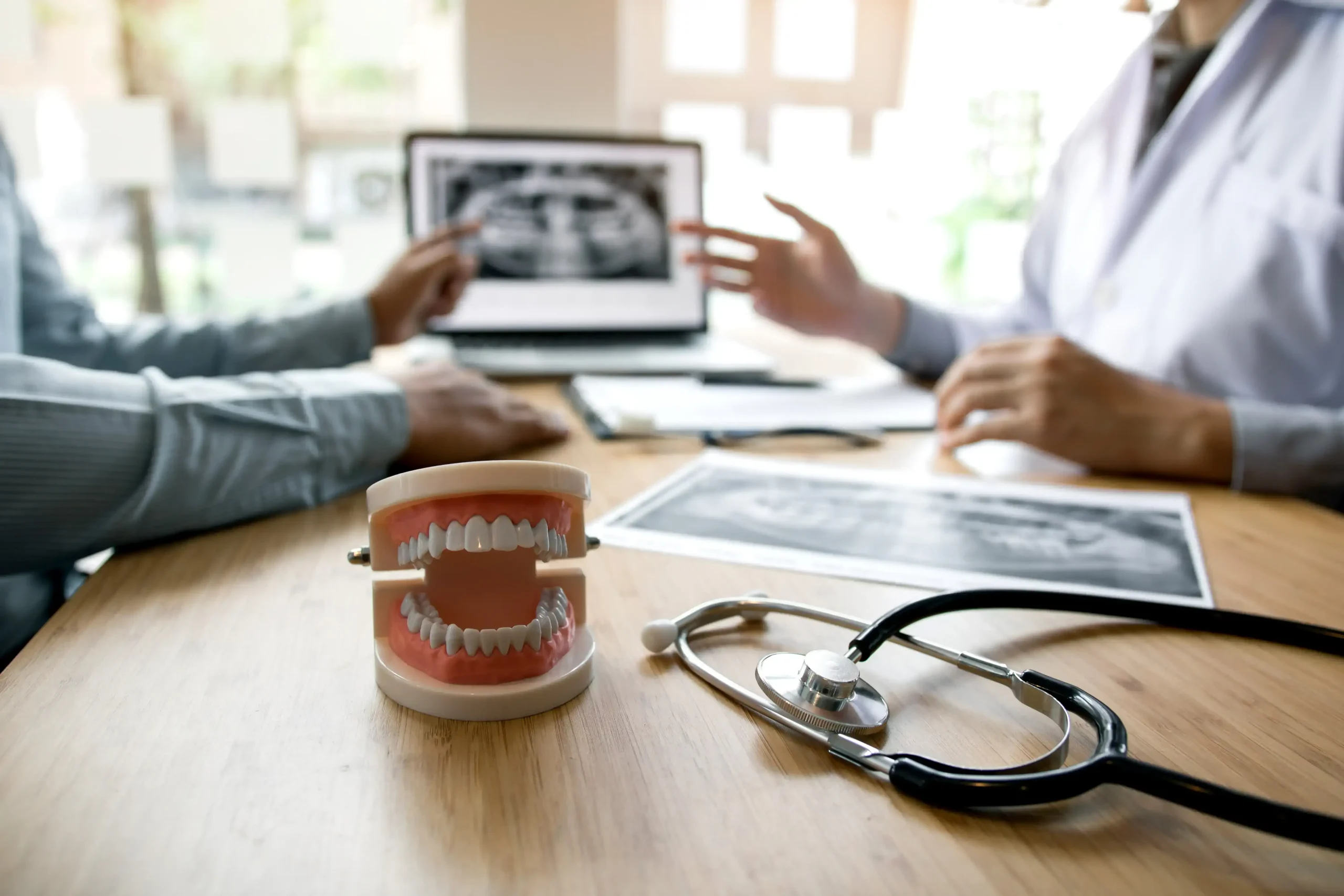Table of Contents
A GUIDE TO PEDIATRIC DENTISTRY IN SCARBOROUGH
Are you in search of a reliable pediatric dentist in Scarborough? Your search ends here! This comprehensive guide will provide you with all the information you need about pediatric dentistry in Scarborough, specifically at Dorset Dental. We’ll cover everything from the importance of pediatric dental care to the specific services offered at our dental office. This article is worth reading because it will help you make an informed decision about your child’s oral health care.
What is Pediatric Dentistry?
Pediatric dentistry is a branch of dentistry that specializes in the oral health of children from infancy through adolescence. Pediatric dentists are trained to care for a child’s teeth, gums, and mouth throughout the various stages of childhood.
Why Choose a Pediatric Dentist?
Pediatric dentists are specifically trained to handle the unique dental needs of children. They are skilled in making children feel comfortable during their dental appointments and are equipped to handle any emergencies that may arise.
Why is Pediatric Dental Care Important?
Pediatric dental care is extremely important for your child’s overall health. Regular dental appointments can help prevent cavities and tooth decay, which can lead to pain and other complications. Additionally, regular check-ups can ensure that your child’s teeth are developing properly.
What Services Does a Pediatric Dentist Provide?
A pediatric dentist provides a wide range of dental services for kids. These include regular check-ups, cleanings, cavity fillings, and orthodontics. They also offer emergency dental services for any unexpected oral health concerns.
Why Choose Dorset Dental?
Dorset Dental can provide pediatric care in Scarborough. Our dental team is trained to provide child-friendly dental care in a comfortable and relaxing environment. We are committed to making your child’s dental experience a positive one.
What Makes Dorset Dental Stand Out?
At Dorset Dental, we understand that kids are not always comfortable with dental appointments. That’s why we strive to create a fun and welcoming environment for kids of all ages. Our dental office is equipped with the latest technology to ensure that your child receives the best care possible.
How to Schedule Your Appointment at Dorset Dental?
Scheduling your appointment at Dorset Dental is easy. You can book an appointment online or call our dental office directly. We offer flexible appointment times to accommodate your busy schedule.
What to Expect During Your Child’s Dental Appointment?
During your child’s dental appointment, our experienced dentist will perform a thorough examination of your child’s teeth and gums. We will also provide a professional cleaning to remove any plaque or tartar build-up. If necessary, we will recommend further dental treatments to ensure your child’s oral health.
How Does Dorset Dental Cater to Special Needs Patients?
At Dorset Dental, we believe that every child deserves excellent oral care. That’s why we offer specialized care for children with special needs. Our dental team is trained to accommodate the specific needs of these patients and provide them with comfortable and effective dental care.
How Can Dorset Dental Help in Dental Emergencies?
We understand that dental emergencies can happen at any time. That’s why we offer emergency dental services to our patients. If your child is experiencing a dental emergency, you can call our office for immediate assistance.
In conclusion, choosing the right pediatric dentist for your child is crucial for their oral health. Dorset Dental is a trusted pediatric dentist in Scarborough that offers comprehensive dental services for children. Here are some key points to remember:
- Pediatric dentists are specifically trained to care for children’s oral health.
- Regular dental appointments are crucial, contact a dentist in Scarborough today.
Q: What is pediatric dentistry?
A: Pediatric dentistry is the branch of dentistry that specializes in the dental care and treatment of children, from infancy to adolescence.
Q: What dental treatments are offered for children in Scarborough?
A: Pediatric dentists in Scarborough offer a range of dental treatments, including routine check-ups, preventive care, restorative work, oral hygiene education, and more.
Q: What is the role of a pediatric dentist in Scarborough?
A: A pediatric dentist in Scarborough provides specialized dental care for children of all ages, with the goal of promoting positive dental habits and maintaining a healthy smile.
Q: How often should children visit a pediatric dentist in Scarborough?
A: Children should ideally visit a pediatric dentist in Scarborough twice a year for routine check-ups and cleanings, or more frequently if they have specific dental problems or concerns.
Q: What dental problems are common in children?
A: Common dental problems in children include cavities, gum disease, tooth decay, and misalignment of teeth or jaw.
Q: How can parents help their child maintain good oral hygiene?
A: Parents can help their child maintain good oral hygiene by helping them brush and floss regularly, encouraging healthy eating habits, and scheduling regular appointments with a pediatric dentist in Scarborough.
Q: Does a pediatric dentist in Scarborough offer sedation for children?
A: Yes, many pediatric dentists in Scarborough offer sedation options for children who may be anxious or fearful about dental procedures.
Q: Is cosmetic dentistry available for children in Scarborough?
A: Cosmetic dentistry may be available for children in Scarborough, but it is important to consult with a pediatric dentist to determine if it is appropriate for your child’s specific needs.
Q: How do I book an appointment with a pediatric dentist in Scarborough?
A: To book an appointment with a pediatric dentist in Scarborough, you can call their office directly or schedule an appointment online if available.
Q: What sets pediatric dentists in Scarborough apart from general dentists?
A: Pediatric dentists in Scarborough have specialized training and experience in providing dental care for children, including understanding and addressing the unique needs of kids’ teeth and oral health.
Key Takeaways
Specialization: Pediatric dentistry is a specific branch of dentistry focused on the oral health of children from infancy through adolescence. These dentists are specially trained to handle unique dental needs and challenges of this age group.
Preventive Focus: Pediatric dentistry emphasizes the importance of early preventive care to help avoid dental issues, such as cavities and tooth decay, which could lead to more serious complications in the future.
Services: A pediatric dentist offers a wide range of services, from routine check-ups, professional cleanings, and cavity fillings, to handling dental emergencies and providing orthodontic recommendations.
Child-friendly Environment: Pediatric dentists strive to create a welcoming, fun, and comfortable environment to alleviate children’s fear of dental procedures, encouraging them to maintain regular dental visits and develop positive oral hygiene habits.
Frequently Asked Questions
Dental emergencies refer to any situation where there is an immediate need for dental treatment or care to alleviate pain, reduce swelling or bleeding, and prevent further damage to the teeth, gums, or mouth.
The most common dental emergencies include painful toothache or sore tooth, chipped or broken tooth, knocked-out or avulsed tooth, loose or dislodged tooth, and soft tissue injuries in the mouth like cuts, lacerations, and bleeding gums.
Yes, it is essential to visit the dentist as soon as possible for emergency dental treatment or dental restoration to prevent the dental problem from worsening or leading to other complications that may affect your oral health and overall well-being.
Depending on the type and severity of the dental emergency, your dentist may be able to put the knocked-out tooth back in its place, use an ice pack or cold compress to reduce swelling, apply dental restoration to fix the tooth, or provide over-the-counter pain relievers and antibiotics to alleviate pain and prevent infection.
If you have a chipped tooth, you should call your dentist or emergency dental office right away to schedule an appointment for emergency dental treatment. In the meantime, rinse your mouth with warm water, use an over-the-counter pain reliever, and apply a cold compress to reduce swelling.
Yes, a loose tooth is considered a dental emergency because it may indicate a serious dental problem that requires immediate attention from a dentist. Your dentist may be able to reinsert the tooth back in its place or provide dental restoration to fix the tooth.
There are over-the-counter pain relievers, cold compresses, and dental floss that can help alleviate pain and reduce swelling for some dental emergencies. However, it is always recommended to see your dentist or emergency dental office for proper diagnosis and treatment of dental problems.
If a tooth gets knocked out, try to reinsert the tooth back in its place without touching or damaging the roots. If that is not possible, keep the tooth in a container of milk or saliva and see your dentist immediately for emergency dental treatment.
You should go to the emergency room for dental problems that involve severe pain and bleeding and may require immediate attention from a medical professional. However, for most dental emergencies, visiting the dentist as soon as possible is the best course of action.
Practicing good oral hygiene habits like brushing and flossing regularly, visiting the dentist for routine check-ups and cleanings, wearing protective gear when playing sports, and avoiding hard and sticky foods can help prevent dental emergencies.
- Regular dental check-ups can help prevent dental emergencies by catching and treating dental issues early.
- Trust Dorset Dental in Scarborough to provide the immediate and professional care you need during a dental emergency.

DONT'T DELAY BOOK TODAY!
The Scarborough Dentist You Can Trust 🦷
Building healthy smiles for a lifetime – Pediatric Dentistry in Scarborough.
Latest Posts

Lost a Tooth During Black Friday Shopping? What to Do — and How Dorset Dental Can Help
Black Friday shopping in Scarborough can be hectic. With crowded stores, tight spaces, and the rush to snag the best deals, accidents happen — including unexpected dental injuries. If you end up with a knocked-out tooth, knowing what to do in the moment can make all the difference. As your trusted Scarborough Dentist and Family Dentist, Dorset Dental is here to guide you through the steps and provide fast, reliable Emergency care when you need it most. How Does a Black Friday Accident Lead to a Knocked-Out Tooth? You’d be surprised how often it happens: A sudden elbow in a packed checkout line Slipping on a wet mall floor A shopping cart collision Rushing during door-crasher sales No matter how it occurs, a knocked-out tooth is a true dental emergency — but with quick action, the tooth may still be saved. What To Do Immediately After a Tooth Gets Knocked Out 1. Stay Calm — Every Minute Counts Your best chance of saving the tooth is to see a dentist near me within 60 minutes. 2. Locate the Tooth Pick it up by the crown only. Avoid touching the root, as this can damage delicate tissues. 3. Rinse Carefully If the tooth is dirty, rinse briefly with milk or saline.Do not scrub or use soap. 4. Try to Put the Tooth Back Gently place it back in the socket and bite down softly on gauze.This helps preserve the root. 5. Keep It Moist If Reinsertion Isn’t Possible Place the tooth in: Milk A tooth preservation kit Inside your cheek Never let it dry out. 6. Call Dorset Dental Immediately We reserve space for Emergency dental visits.Call 416-261-2946 while you are on the way. How Dorset Dental Treats a Knocked-Out Tooth At Dorset Dental — your community Scarborough Dentist — we will assess the tooth and determine the best treatment: ✔ Reimplantation If the tooth is viable, we can carefully secure it back in place. ✔ Splinting We stabilize the tooth so it can heal properly over the coming weeks. ✔ Root Canal Treatment Often recommended after reimplantation to ensure long-term success. ✔ Replacement Options If the tooth cannot be saved, our Family Dentist team offers: Dental implants Bridges Cosmetic restorations We’ll help you choose the option that best restores your smile. Why Choose Dorset Dental in Scarborough for Emergency Care? Trusted Family Dentist serving the Scarborough Bluffs community Fast, reliable Emergency dental appointments Modern technology Compassionate, experienced team Convenient location at 119 Dorset Road Whether you’re searching for a dentist near me or need urgent help, Dorset Dental is here to support you. Final Thoughts A Black Friday shopping mishap doesn’t have to mean losing your smile. Quick action — and a trusted Scarborough Dentist — can make all the difference. If you or a loved one experiences a dental Emergency, call Dorset Dental right away at 416-261-2946. Our team is ready to help you get back to smiling with confidence. 0/5 (0 Reviews)

How a Dental Cleaning Supports Heart Health — And Why You Should Book Before Year-End
Most people know that a Dental Cleaning helps keep teeth bright and gums healthy — but many don’t realize it can also help protect your heart health. At Dorset Dental, your trusted Scarborough Dentist, we care about your oral health and your overall well-being. With the end of the year approaching, now is the perfect time to schedule your cleaning and maximize your dental insurance before your benefits reset. The Mouth–Heart Connection Your oral health and heart health are deeply linked. Research shows that gum disease (periodontal disease) is associated with an increased risk of heart problems, including heart disease, clogged arteries, and stroke. Here’s why: 1. Inflammation Travels Gum disease causes inflammation in the mouth. When untreated, that inflammation can spread through the bloodstream and contribute to inflammation in blood vessels — a major risk factor for cardiovascular disease. 2. Bacteria Enter the Bloodstream Harmful bacteria from infected gums can enter the bloodstream and attach to blood vessels, potentially contributing to plaque buildup and reduced blood flow. 3. Shared Risk Factors Lifestyle factors like poor diet, smoking, and stress affect both gum health and heart health. This makes routine dental care essential for your overall well-being. Why Regular Dental Cleanings Matter A professional Dental Cleaning removes plaque and tartar buildup that you cannot eliminate with brushing or flossing alone. Regular cleanings help: Reduce gum inflammation Prevent gum disease Lower harmful oral bacteria Promote healthier blood vessels and circulation At Dorset Dental, we provide gentle, thorough cleanings to help patients from Scarborough, the Bluffs, and surrounding communities maintain excellent oral and overall health. Use Your Dental Insurance Before It Expires Most insurance plans reset on January 1st — meaning unused benefits do not carry forward. Booking your dental cleaning now helps you: Maximize your dental coverage Prevent gum disease and support heart health Avoid the end-of-year rush and limited availability Start the new year with a clean, healthy smile If you haven’t used your 2025 cleaning or exam benefits yet, now is the best time to book. Visit Your Trusted Scarborough Dentist — Dorset Dental Whether you’re in Scarborough, the Bluffs, or nearby communities, Dorset Dental is here to support your health with comprehensive care and comfortable visits. 📞 Call us: 416-261-2946📍 119 Dorset Road, Scarborough, ON M1M 2S9💻 Book online anytime! 0/5 (0 Reviews)

Don’t Lose Your 2025 Dental Benefits — Schedule Your Appointment Before the Year Ends!
As the year comes to a close, life in Scarborough, especially around the Cliffside and Bluffs neighbourhoods, gets busy with holiday plans, family gatherings, and festive activities. But before you dive into the celebrations, don’t forget one important thing — your dental health! If you haven’t used your dental benefits yet, now is the perfect time to schedule your appointment at Dorset Dental in Scarborough before the year wraps up. 🦷 Why You Should Book Before December 31st Most dental insurance plans reset on January 1st, meaning any unused benefits for cleanings, exams, or treatments will not carry over into the new year. That means if you delay your visit, you could lose hundreds of dollars in coverage that you’ve already paid for through your premiums. At Dorset Dental, conveniently located near the Scarborough Bluffs and Cliffside Village, we want to help you maximize your benefits and keep your smile healthy and bright all year round. ✅ Use Your 2025 Benefits For: Routine cleanings and checkups Fillings, crowns, or other restorative treatments Whitening or cosmetic touch-ups before holiday photos Periodontal maintenance or gum care Orthodontic adjustments and follow-ups 📅 Appointments Fill Up Fast Our schedule fills quickly in November and December as patients in Scarborough, Cliffside, and the Bluffs area book last-minute appointments to use their benefits. To ensure you get a time that works best for you and your family, book your appointment as soon as possible. 💙 We’re Here to Help If you’re not sure what your insurance covers or how much of your benefits remain, our friendly team can help you review your plan and make the most of it. Don’t wait until it’s too late — your future self (and your smile) will thank you! 📍 Dorset Dental119 Dorset Road, Scarborough, ON M1M 2S9📞 Call us today: 416-261-2946 0/5 (0 Reviews)


